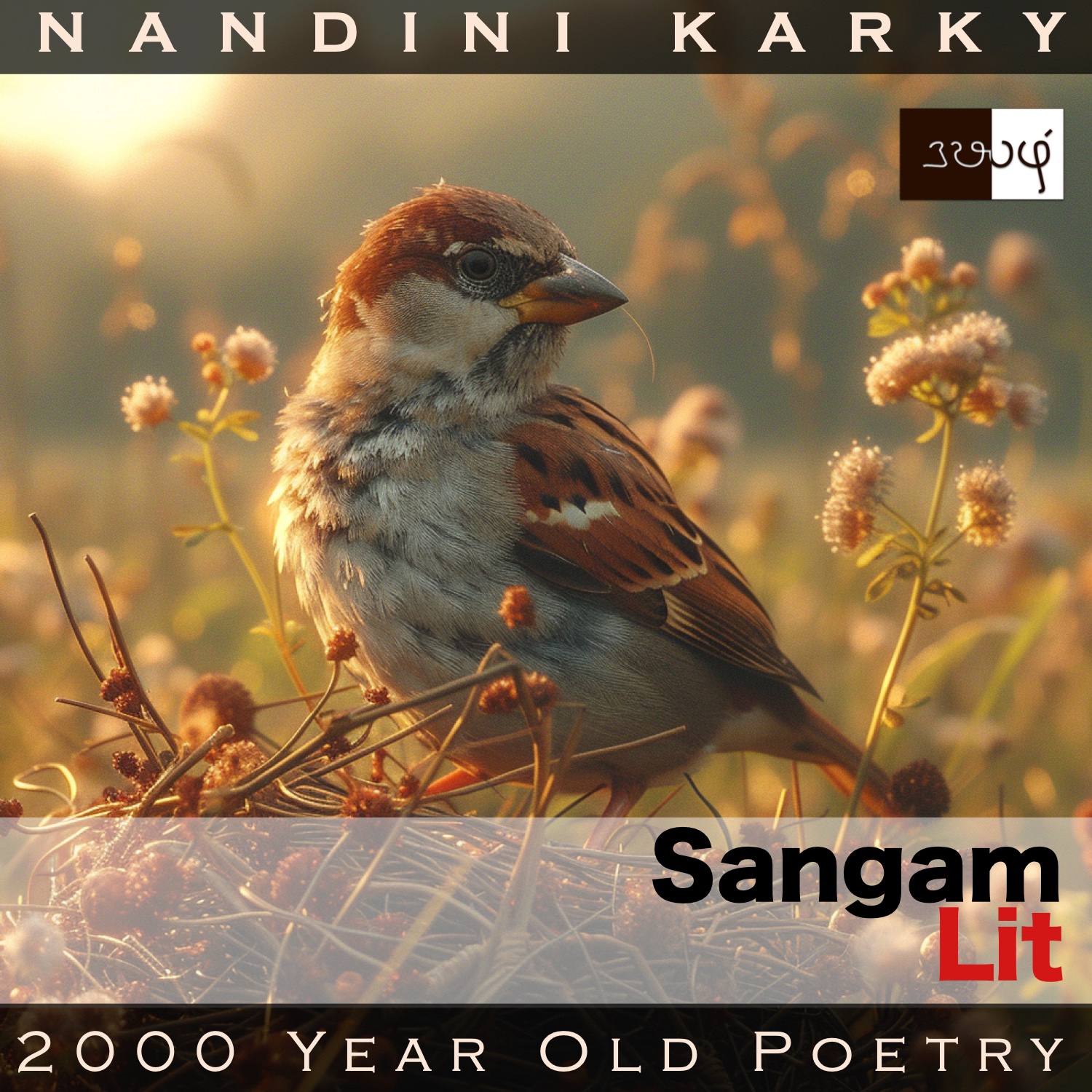Podcast: Play in new window | Download
Subscribe: Apple Podcasts | Spotify | Amazon Music | Android | iHeartRadio | Email | TuneIn | RSS | More
In this episode, we perceive the present prosperity of a place with a curious illustration, as portrayed in Sangam literary work, Puranaanooru 318, penned by the poet Perunkundroor Kizhaar. The verse is situated in the category of ‘Vaagai Thinai’ or ‘Victory’ and speaks about the consequence of a king’s fall.

கொய் அடகு வாட, தரு விறகு உணங்க,
மயில்அம் சாயல் மாஅயோளொடு
பசித்தன்று அம்ம, பெருந்தகை ஊரே
மனை உறை குரீஇக் கறை அணல் சேவல்,
பாணர் நரம்பின் சுகிரொடு, வய மான்
குரல் செய் பீலியின் இழைத்த குடம்பை,
பெருஞ் செய் நெல்லின் அரிசி ஆர்ந்து, தன்
புன் புறப் பெடையொடு வதியும்
யாணர்த்து ஆகும் வேந்து விழுமுறினே.
A ‘Puram’ verse that has elements of ‘Aham’ in its description of a town! The poet’s words can be translated as follows:
“As the plucked greens wither, as the felled wood fades, along with the peacock-like, dark-skinned woman, the entire town of the great lord would wallow in hunger. That would be the state of the town, where the black-throated male sparrow that lives in houses, builds its nest with the strings of bards’ lutes and the mane of horses, akin to peacock feathers, and then feeds on the paddy flourishing in the vast farm fields and lives with its mate with a spotted back in a state of unceasing prosperity, if the king were to fall!”
Let’s delve into the nuances. The poet starts by painting scenes of apathy and desolation, wherein greens that were plucked to be cooked are withering in one corner and the wood that was collected to start that cooking is drying up in another corner. From these objects, the poet turns to a person, a woman said to be dark-skinned and graceful like a peacock, and he says that like this woman, who will suffer in hunger, so will the entire town of the lord. Without saying when and why this will happen, the poet launches into a description of the town by sketching the life of a bird here. A moment to note the term used in this ancient poem for this bird, which is ‘மனை உறை குரீஇ’ meaning ‘a sparrow residing in houses’ – something remarkable because the common English name of this bird is ‘house sparrow’, echoing a striking similarity in thought across the ages.
Returning to the verse, we find the poet talking about how the male of this black-throated bird takes the strings of lutes and hair from the mane of horses, which seem like peacock feathers, to build its nest. Let’s return to the significance of these construction materials in a short while. The poet continues describing the lifestyle of the bird saying it feeds to its heart’s content from the crop fields brimming with paddy and then lives happily with its mate. Such is the fertility of the leader’s town and all this will end and the place will be left in hunger, if the king falls in the battlefield, the poet concludes. This could either be the king’s town or it could be the town of the leader who supports this king and the poem wants to illustrate that once the king falls, like a stack of dominoes, the life of the leader, his wife, his villagers and even a little sparrow would fall, indicating an enormous dependancy on one person – the king of the land.
Reverting back to those construction materials we noted a while ago, why does the poet refer to lute strings and horse manes as the building blocks of these sparrows’ nests? Only to say that bards frequented the place implying great wealth abounded there and also horses were in plenty, talking about the military support the leader extended to his king. The portrait of this sparrow building its nest with these materials brought an image, I recollect seeing, a few years ago, of a crow building its nest, near my house, with wires and white tapes used in cardboard packaging. A unique verse that makes us mull over how the hand of humans continues to transform the nest of birds, and by extension, the habitat of all life around!




Share your thoughts...